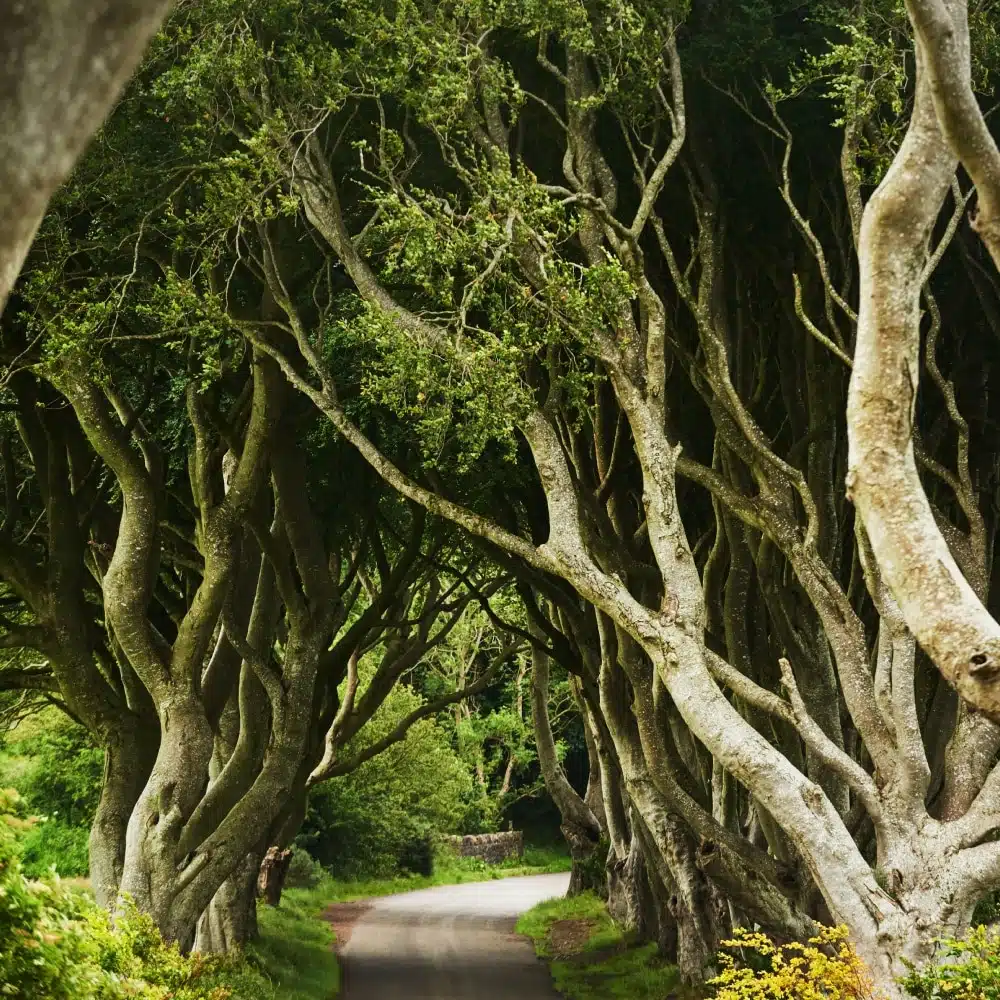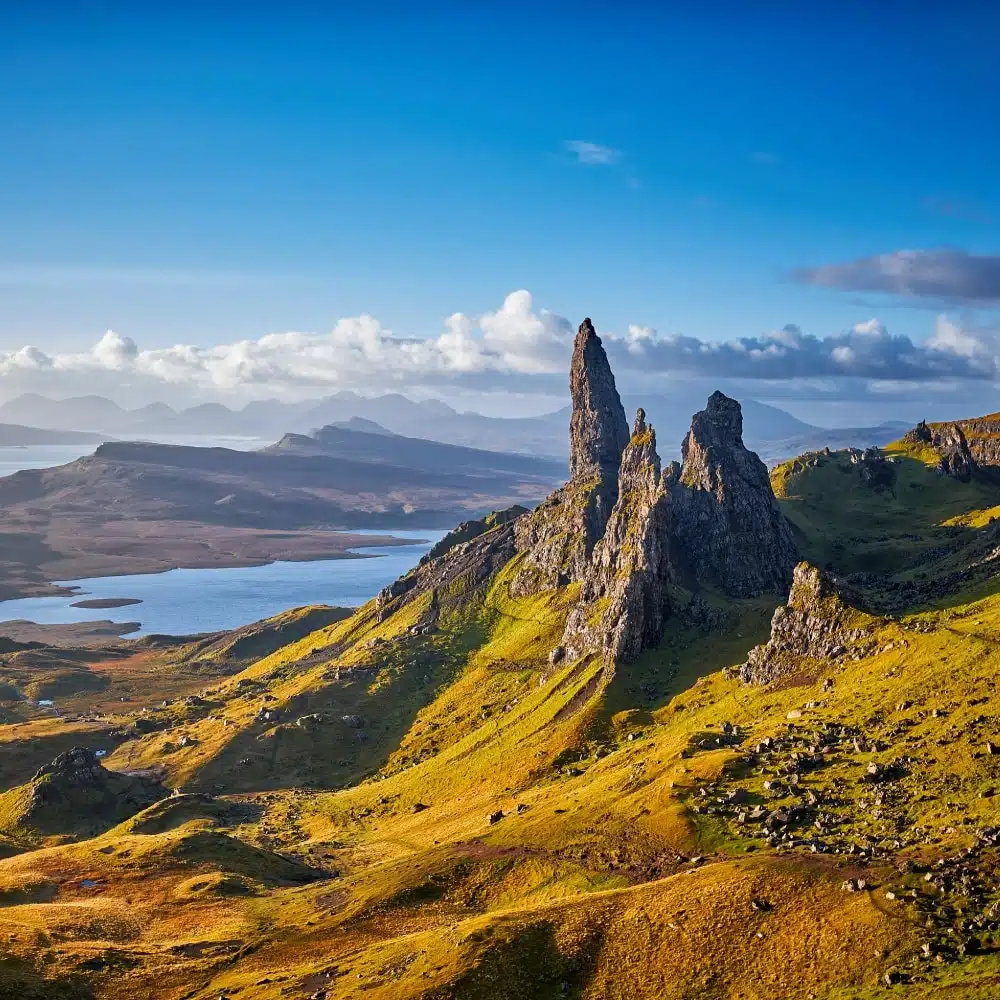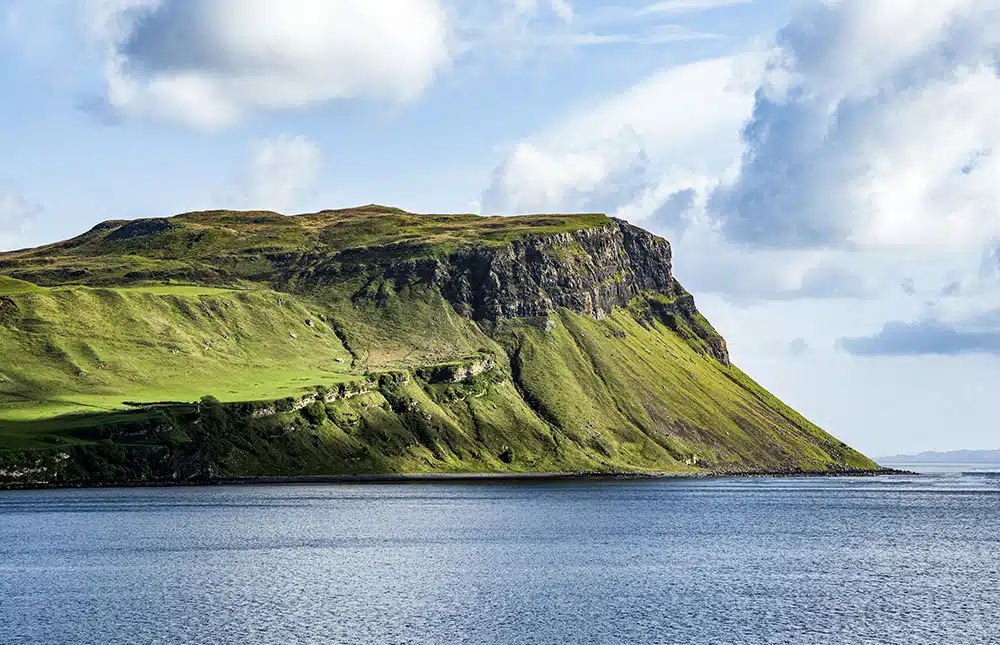Travel to the boundaries of reality
The British Isles are home to centuries-old myths and legends, carried by the waves and different peoples. Some creatures are still talked about today, despite the lack of proof of their existence. No wonder the British Isles are the birthplace of the Harry Potter saga and the setting for the cult series Game of Thrones. Embark on a journey that stretches your imagination.
Cornish piskies and other magical creatures
In the wilds of Cornwall, beware of piskies, especially when passing dolmens and menhirs. These funny and mischievous pixies look like tiny little boys and supposedly live in ancient sites all over England and the surrounding islands. They love to dance and play between megaliths. In the land of J. R. R. Tolkien – author of the famous fantasy saga The Lord of the Rings – there are many such prehistoric monuments formed from one or more stone blocks. The most famous is Stonehenge: an outer circle of monumental vertical standing stones with smaller inner circles. The UNESCO World Heritage Site is thought to be a temple or shrine related to the sun. But we still haven’t unravelled all its mysteries.
There may be more to menhirs than meets the eye! The British Isles are home to other sacred sites with large, elongated, upright stone blocks that are just as mysterious. Like Long Meg and Her Daughters in Cumbria, a Bronze Age relic comprised of 69 stones. Legend has it that this is a circle of witches who were turned to stone by a magician. This story echoes that of Boskednan, a stone circle in the hills of the seaside resort of Penzance.

Ireland: the set of fantasy films and series
There are also plenty of mythological and folk creatures in Ireland. After the banshee and grogoch (half-human, half-fairy), the most emblematic of them is the leprechaun. This mischievous creature dresses in green, wears a tall hat and loves a good beer. He is said to have a pot of gold and treasures. Over time, the Irish began associating Saint Patrick’s shamrock with good luck and leprechauns. Wear green if you’re visiting Ireland on 17 March – Saint Patrick’s Day.
A land of supernatural beings, Ireland has naturally become the setting for fantasy films and series. A scene from Harry Potter and the Half-Blood Prince was filmed in a dark, rocky cave in the towering Cliffs of Moher in County Clare. Many scenes from the cult series Game of Thrones were also shot in Northern Ireland, and many of the soldiers who fought and died alongside Jon Snow were played by extras from the region. One of them now offers guided tours to discover iconic locations used in the series, including the Dark Hedges, an avenue of spooky beech trees, the decor for the fictional city of Westeros. Meanwhile, the green Shillanavogy Valley, to the north of Belfast, served as a backdrop for the settlements of the Dothraki, a nomadic warrior people. This is where, in the first season, Daenerys Targaryen gradually came to terms with her role as Khaleesi and mother of dragons.

Discover Jurassic Park on Scotland’s Isle of Skye
In the mystical Scottish Highlands, a gigantic winged reptile is said to haunt Loch Ness. The legend dates back to 565 when an Irish monk claimed to have used a cross to push back some kind of water dragon into the depths of the lake. Centuries later, in 1933, a visitor from London, George Spicer, also claimed to have seen “a dragon or a prehistoric animal”. Whether it is home to a monster or not, the Loch Ness region offers extraordinary landscapes: ancient pine forests, moors covered with heather, sparkling lochs, wooded valleys, waterfalls and meadows where cows and sheep graze, not to mention manors, ruins and (sometimes haunted) castles.
But if you think seeing is believing, take a detour to the Isle of Skye. On the sea-sprayed coastline of one of the most beautiful islands in Scotland, palaeontologists have found countless dinosaur footprints, teeth and huge bones. The fossil of the “largest Jurassic pterosaur” was discovered there in 2017 by Scottish PhD student of palaeontology, Amelia Penny. This fossil is all the more extraordinary as the animal had a wingspan of over 2.5 metres. The following year, tracks from sauropods (dinosaurs forty metres long) were discovered for the first time. Or maybe they were made by dragons…

Photos credits : ©iStock

PONANT takes you there
Uncover the mysteries of islands of legends



